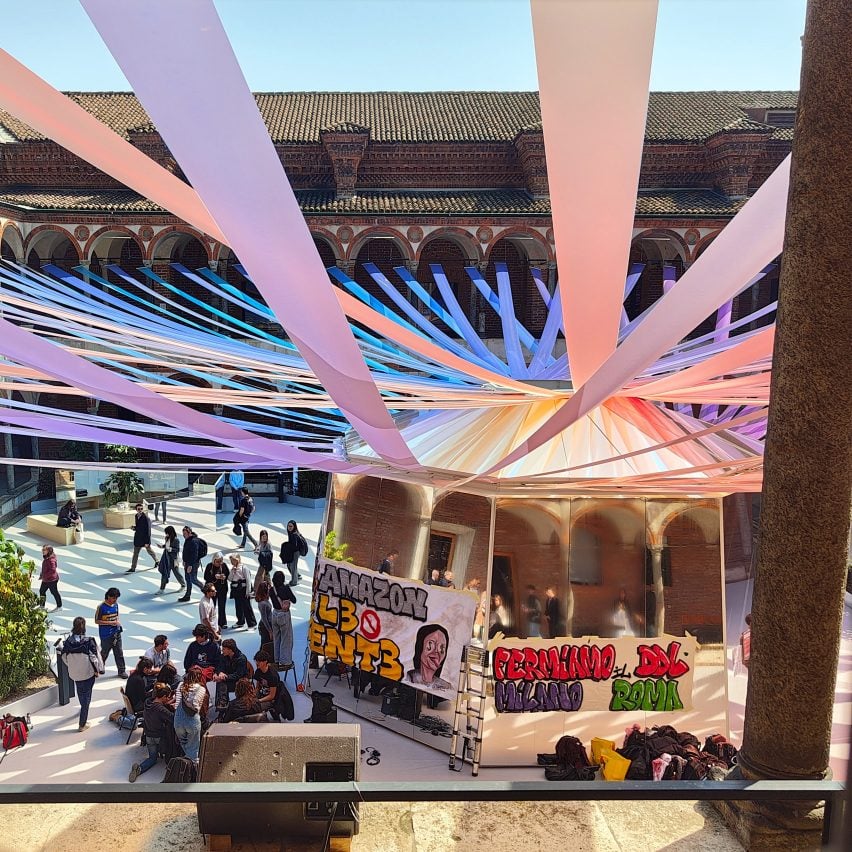A protest is taking place at Milan design week over the use of a normally closed University of Milan courtyard for an installation by architecture studio MAD.
Protesting students erected banners on a mirrored pavilion that formed the centrepiece of the studio’s The Amazing Place installation in the Cortile della Farmacia (Pharmacy Cloister) at the University of Milan on Wednesday.

The protesters are unhappy that the courtyard, which is normally closed to students, has been opened during Fuorisalone week to host an installation funded by online-retail giant Amazon.
A banner above the entryway to the courtyard read “Chistro Bancomat” – Italian for “cash-machine cloister” – accompanied by an illustration of a dollar bill wedged between a pair of buttocks.

“The Pharmacy Cloister is closed to all students with the ridiculous justification of the historical significance of the cloister, which would otherwise be used by the harmless presence of students,” said flyers being handed out by the protesters.
“Cloister that at the same time is opened and occupied whenever perfumed dirty money is waved under the noses of the upper management of Milan State University,” it continued.
“The Fuorisalone is yet another example of a Milan that wants us servants, that does not intend to allocate any energy and any space to freedom, sociality, common welfare, free expression, students and young people.”

Around 25 students were participating in a courtyard sit-in when Dezeen visited on Wednesday afternoon.
The installation did not appear to have been damaged, and protestors were not preventing visitors from entering the pavilion.

One of the protesting students, who gave his name as Nico, told Dezeen they planned to stay until the university leadership agreed to engage with them over the use of the courtyard – and suggested the protest may run over more than one day.
MAD’s pavilion is a seven-metre-tall octagonal mirrored structure with colourful plastic ribbons flowing across the courtyard from its roof to the cloister’s upper level.
Inside, lamps by brands including Flos, Artemide and Seletti are on display. Other furniture and home accessories available on Amazon’s Italian website are being showcased across the wider courtyard.
QR codes positioned next to each product link to the item on Amazon.
“Visitors can contemplate or interact with the products on display in the mirror-clad pavilion, though QR codes, capable of reshaping interaction with the built environment in space and time,” read an information board outside the installation.

The installation is part of the wider Cre-Action exhibition curated by Italian design magazine Interni taking place across the university site. It is open from 7 to 7 April, with a programme of talks also taking place in the courtyard during the event.
Amazon, Fuorisalone and the University of Milan declined to comment on the protest. MAD and Interni have been contacted for comment.
The photography is by Nat Barker.
The post Amazon-funded MAD installation hit with student protest at Milan design week appeared first on Dezeen.

